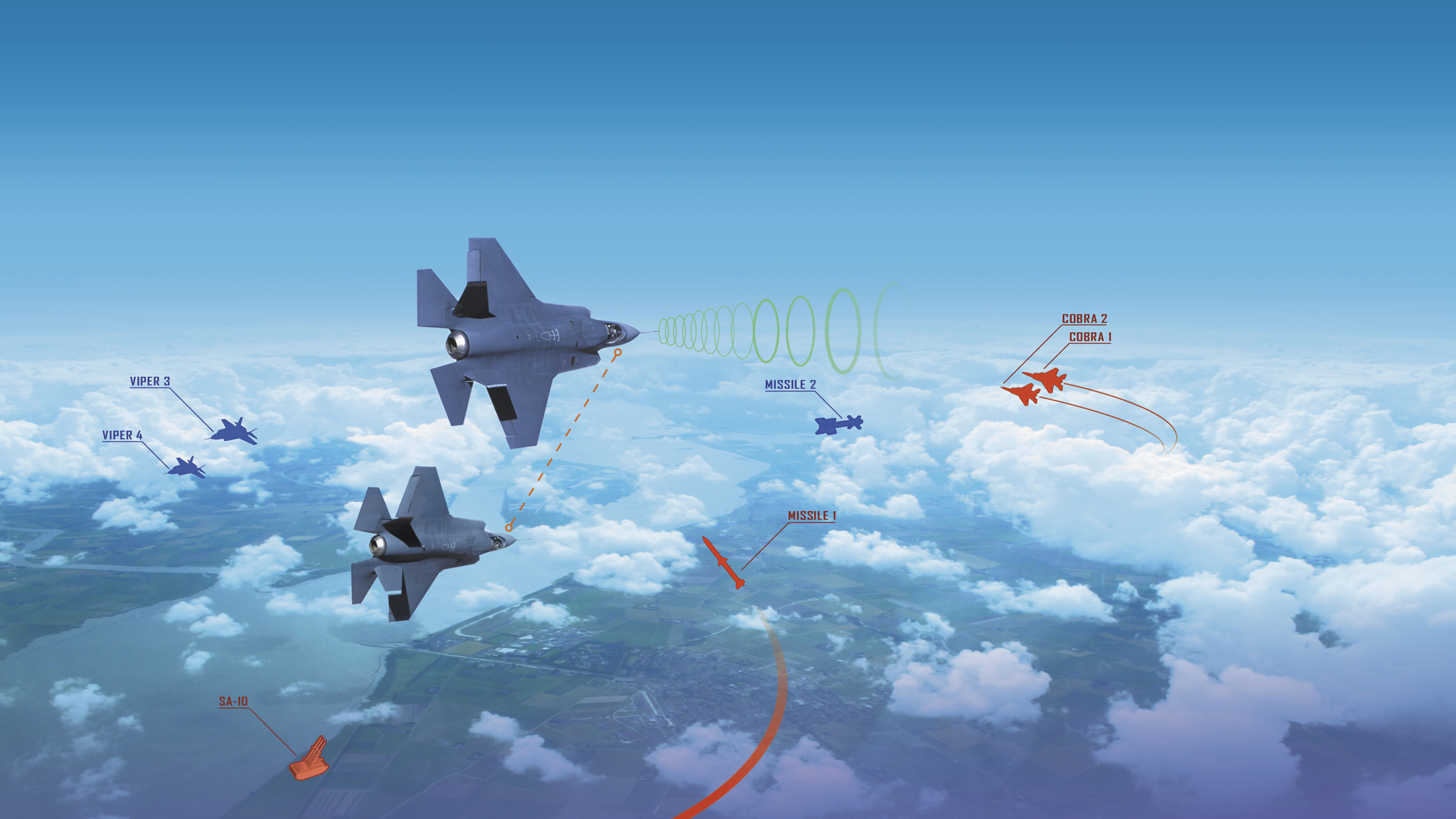Military flight simulation plays a critical role in training fighter pilots for tactical air-air combat missions. To effectively prepare pilots for real-world scenarios, simulations must include challenging and realistic training environments. This is where NLR’s expertise comes in – we can help create intelligent enemy fighter aircrafts (CGFs) that mimic realistic behaviour, allowing pilots to practice adaptive tactics and decision-making in dynamic situations.
In tactical engagements, it is essential for fighter pilots to be able to change their plans and adapt to the situation at hand. However, current military mission simulations often fall short in simulating realistic enemy behaviour. Despite advancements in artificial intelligence, modelling human behaviour in real-time mission simulators remains a challenge. Typically, virtual opponents in simulations act according to predefined scripts, limiting their ability to react dynamically and realistically to pilots’ actions.
NLR’s Smart Bandits AIR is an artificial intelligence module designed to create intelligent behaviour models for virtual opponents in tactical air-air combat simulation. The Smart Bandits module can be efficiently coupled to your simulation platform, enabling more realistic and dynamic simulations. Our solutions also include accessible tools for instructors or domain experts to design realistic, non-scripted behaviour models for virtual opponents. By leveraging our expertise, you can create more effective training simulations that challenge pilots with intelligent enemy fighter aircrafts, ultimately enhancing their preparedness for real-world missions.
NLR can support you with:
The key features and benefits of Smart Bandits AIR include:
- Combining state-of-the-art artificial intelligence techniques with an easy-to-use interface to design behavior models for virtual opponents.
- Enabling behaviour models to be designed and executed fully independently of a specific simulation platform.
- Effective behaviour modeling through:
- An easy-to-use graphical editor for creating behaviour models for air platforms.
- The use of hierarchical finite state machines to translate behaviour doctrines into computational models without requiring programming expertise.
- Predefined content in the form of behavioural building blocks for aircraft maneuvers, countermeasures, and reasoning based on sensor observations.
- Flexible and easy operation, allowing:
- Instructors or domain experts to create and run training scenarios without requiring technical expertise.
- Scenario creation by building behaviour models for virtual opponents that can be tested directly in the target simulation platform.
- Scenario execution with real-time inspection and follow-up of Smart Bandits agents’ mental states.
- Easy integration into COTS simulation platforms through a flexible integration process, with:
- Pre-built integrations available for STAGE, VBS2/3, and VR-Forces.
- Support for other platforms available.
- Ongoing development focused on leveraging new technologies such as machine learning and applying Smart Bandits AIR for embedded training, initiated by the Royal Netherlands Air Force.

